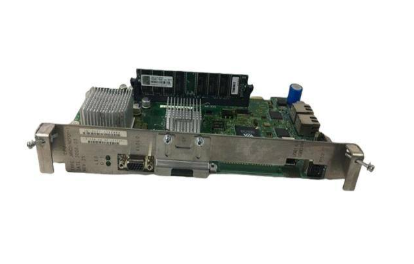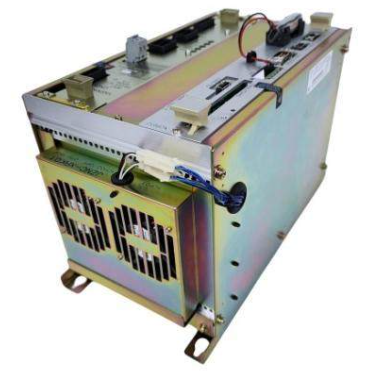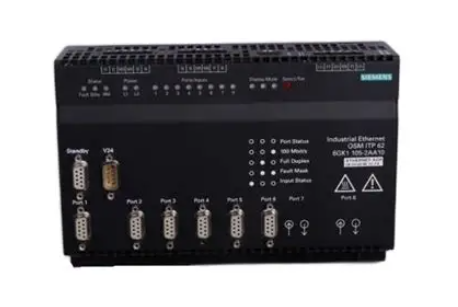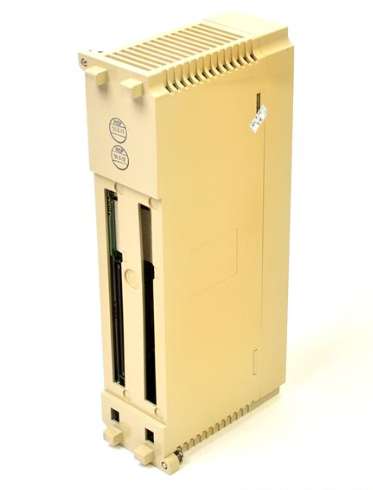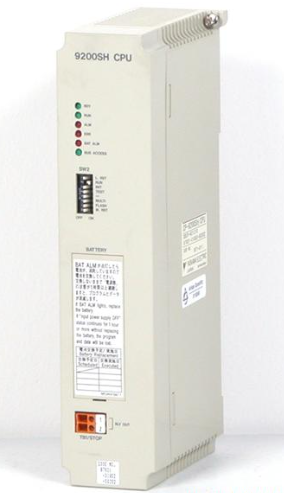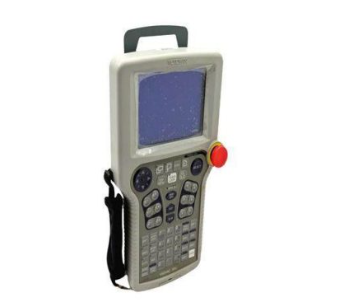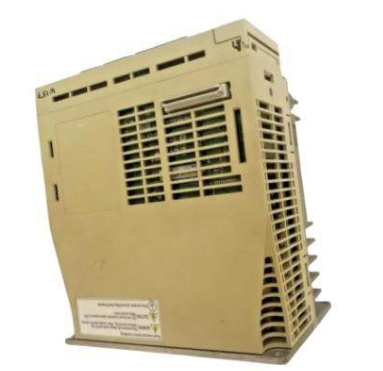ABB AC 800M PROFIBUS DP System
ABB AC 800M PROFIBUS DP System
PROFIBUS Technical Basics
Overview of the protocol: PROFIBUS is the fieldbus standard for industrial automation and consists of two protocols, DP and PA. DP is used for communication between controllers and decentralised peripheral devices and has a high transmission rate, while PA is specially designed for the process industry and supports bus power supply and intrinsic safety, has a transmission rate of 31.25 kbit/s, and can be integrated into the DP network by means of a link device.
Technical terminology: ISO/OSI reference model, bus-specific access control and addressing. Device addresses are 7-bit, range 0 - 127, some addresses have special uses, functions vary between protocols, AC 800M/CI854 (A) supports basic and extended functions.
Transmission technology: RS485 is widely used and supports a variety of rates, the cable type affects the transmission distance and performance; RS485 - IS is used in intrinsically safe areas; MBP adopts Manchester encoding and supports bus power supply and intrinsic safety; fibre-optic transmission is suitable for strong electromagnetic interference or long-distance scenarios, and there are a variety of cable types to choose from.
Fieldbus Topology
Common topologies: point-to-point, line, line with branch, tree, star and ring topologies. Each topology has different characteristics and is applicable to different scenarios, e.g. point-to-point is used for specific sub-segment connections, ring topology has high network security.
RS485 (PROFIBUS DP) topology: the bus length is related to the transmission rate, correct terminal matching is required, 9-pin D-Sub connectors are used, attention is paid to the shielding and data line connection, avoiding the use of passive branch cables, the maximum number of devices to be connected to the network segment is 32, which can be extended by repeaters.
MBP (PROFIBUS PA) topology: Tree or line structure, fixed transmission rate, cable length subject to a variety of factors, intrinsically safe installation needs to follow the FISCO model, both ends of the bus need to be correctly terminated to match the length of the branch line has a limit.
Fibre optic topology: bus, star or ring network can be constructed, with various transmission rates, anti-interference, long distance transmission and other advantages, through the optical link module to achieve the electrical and optical network conversion, different topologies have different settings and requirements.
System redundancy design
Redundancy concept: covers controller, line and slave redundancy. Controller redundancy is realised by the CI854A module, which is automatically activated in the event of a failure; line redundancy requires redundant transmission media and bus connections, which are supported by the CI854A, and single-interface slaves can be connected to the redundant line with the help of the RLM 01 module; slave redundancy consists of redundant links/gateways and optional I/O modules.
RLM 01 module: Converts redundant and non-redundant PROFIBUS lines, supports a wide range of rates, communication monitoring, relaying, etc. Attention should be paid to port connections, terminating resistor settings and transmission rate selection during installation.
PROFIBUS device commissioning
Cable Installation: Electrical data cable installation should avoid damage and follow the operation specification; fibre optic cable installation should pay attention to cleanliness, avoiding stress, and selecting appropriate cables for different scenarios; PROFIBUS DP installation has special grounding and shielding requirements, and devices such as the CI854 (A), RLM 01, and LD 800P have specific steps and precautions for installation.
Network Testing and Problem Solving: Test bus cables and connectors after installation to troubleshoot common errors. The document provides solutions and recommendations for common installation problems, such as address conflicts and polarity errors, as well as ways to obtain more information and purchase related components.
Technical Characteristics
Transmission technology: MBP (Manchester Coded, Bus Powered) transmission technology, i.e. Manchester Coded and Bus Powered. The transmission rate is fixed at 31.25 Kbit/s. This synchronised transmission allows intrinsically safe communication in potentially explosive areas. Shielded twisted-pair cables are used as the transmission medium. The cables have specific parameters, such as a conductor cross-section of 0.8 mm², a wave impedance of 100 Ω ± 20%, etc., and the cable colours are differentiated in different areas, black in non-hazardous areas and blue in hazardous areas.
Network structure: Supports tree or line structure, or a combination of both. In the tree structure, the devices are connected to the trunk cable through branch lines, similar to the traditional on-site installation method; in the line structure, the devices are connected to the trunk cable sequentially. These two structures facilitate the flexible construction of the network according to the layout of the field equipment, but in the calculation of the total length of the bus, you need to take into account the maximum permissible length of the branch line.
Intrinsically safe: The design is based on the FISCO (Fieldbus Intrinsically Safe Concept) model, which is based on a number of prerequisites to ensure intrinsic safety. For example, only one active source (usually a link device) is allowed on the bus segment, the other components are passive current absorbers; the basic current consumption of the bus station is at least 10 mA; specific voltage, current and power relationships are met, as well as capacitance and inductance limits.
Device connection and power supply: PROFIBUS PA devices are mostly connected to the network by means of multibarries or T-junctions; the branch lines can be connected directly to the connector blocks inside the device, or M12 plugs are used. The power supply of the devices is realised via the bus. In intrinsically safe applications, there are limits on the supply voltage and current, e.g. 100mA in hazardous areas and 400mA in non-hazardous areas.
Data communication: The format of the data telegrams is similar to asynchronous RS-485 transmission, but the transmission of the MBP segments is bit-synchronous and the telegrams are supplemented with a leading code and start and end delimiters. Data security is achieved by parity and block checking with a Hamming distance HD = 4 and up to three errors can be detected.
Network limitations: up to 32 devices per network segment, but the actual number is limited by the type of protection and bus power. The maximum line length of the network can be up to 1900 m in non-intrinsically safe areas and 1000 m in intrinsically safe areas, depending on the power consumption of the devices and the type of cable selected.

- EMERSON
- Honeywell
- CTI
- Rolls-Royce
- General Electric
- Woodward
- Yaskawa
- xYCOM
- Motorola
- Siemens
- Rockwell
- ABB
- B&R
- HIMA
- Construction site
- electricity
- Automobile market
- PLC
- DCS
- Motor drivers
- VSD
- Implications
- cement
- CO2
- CEM
- methane
- Artificial intelligence
- Titanic
- Solar energy
- Hydrogen fuel cell
- Hydrogen and fuel cells
- Hydrogen and oxygen fuel cells
- tyre
- Chemical fiber
- dynamo
- corpuscle
- Pulp and paper
- printing
- fossil
- FANUC
- Food and beverage
- Life science
- Sewage treatment
- Personal care
- electricity
- boats
- infrastructure
- Automobile industry
- metallurgy
- Nuclear power generation
- Geothermal power generation
- Water and wastewater
- Infrastructure construction
- Mine hazard
- steel
- papermaking
- Natural gas industry
- Infrastructure construction
- Power and energy
- Rubber and plastic
- Renewable energy
- pharmacy
- mining
- Plastic industry
- Schneider
- Kongsberg
- NI
- Wind energy
- International petroleum
- International new energy network
- gas
- WATLOW
- ProSoft
- SEW
- wind
- ADVANCED
- Reliance
- YOKOGAWA
- TRICONEX
- FOXBORO
- METSO
- MAN
- Advantest
- ADVANCED
- ALSTOM
- Control Wave
- AB
- AMAT
- STUDER
- KONGSBERG
- MOTOROLA
- DANAHER MOTION
- Bently
- Galil
- EATON
- MOLEX
- Triconex
- DEIF
- B&W
- ZYGO
- Aerotech
- DANFOSS
- KOLLMORGEN
- Beijer
- Endress+Hauser
- MOOG
- KB
- Moxa
- Rexroth
- YAMAHA
- Johnson
- Westinghouse
- WAGO
- TOSHIBA
- TEKTRONIX
- BENDER
- BMCM
- SMC


Email:wang@kongjiangauto.com

